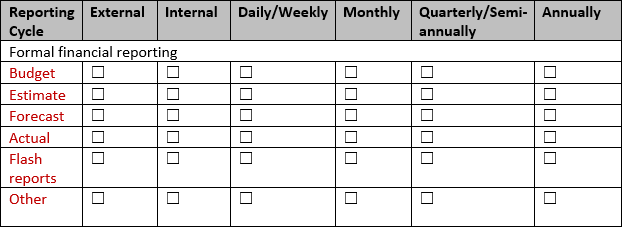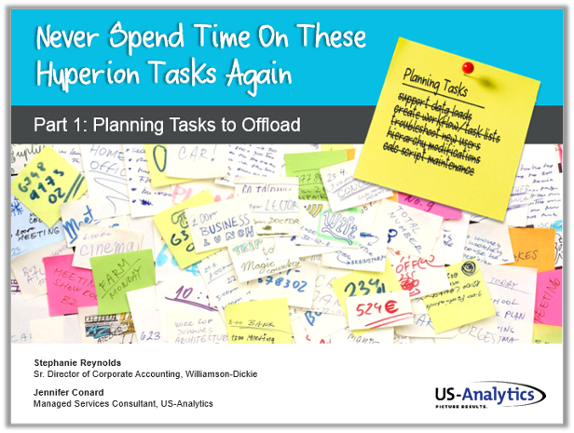Organizations face high Hyperion administrator turnover, so it’s understandable if your Hyperion Planning documentation isn’t up to date. Documentation is tedious and time consuming. If you’re the new Hyperion admin or filling in until a replacement comes along, you’re probably overwhelmed with where to start.
In this blog post, we’ll go over several tips to help you get started with your Hyperion Planning documentation.
Performance Management Processes
When it comes to an EPM implementation, it’s easy for the lines between IT and Finance to get crossed. The finance team might assume that this is like any other software or hardware implementation: IT will fix it up, and I will reap the benefits. Wrong!
As the admin, it’s your job to understand those roles. Whether you’re implementing Hyperion Planning now, or you’re trying to complete documentation for an older application — your finance team plays the largest role in system development.
You need to look at your performance management processes, specifically your financial performance reporting processes. This will give you a better understanding of how your Hyperion Planning application works and how it needs to evolve.
Filling out this table will help you get started:
Planning, Budgeting, and Forecasting Processes
As the bridge between finance and IT, you must understand the business processes as well as the system. So before taking a deep look at your Hyperion Planning application(s), you should fully grasp your organization’s planning, budgeting, and forecasting process. Here’s a list of questions to help you get started:
- Which subject areas does your company address in planning, budgeting, and forecasting?
- Profit and Loss
- Balance Sheet
- Cash Flow
- Capex
- Products
- Customers
- Projects
- Regions/Locations/Geography
- Other
- Identify the level of involvement from different departments of your organization:
- Sales/marketing
- Production
- Human resources
- Cost center budgeting
- Other
- Describe the planning processes and differences between long range plans, budgets, plans, and forecasts. You should include the differences in the level of detail and types of methods used, such as rolling forecasts.
- Describe the budget approval processes.
- What are the key business drivers considered in budget preparation?
Documenting a Single Planning Application
If you have a single Hyperion application, you are allowed three custom plan types and two modules: Workforce and Capex.
Common plan types include:
- Core: GL Account, Entity
- Revenue: Product, Customer
- Salary/Workforce: Employee, Position
- Capital/Capex: Asset Category, Projects, etc.
- Sales: Customer, Sales Rep
- Balance Sheet/Cash Flow
There are many benefits to using a single Planning application. For the Hyperion admin, those benefits are having an easier system to manage and document. Your forms and rules will be shared between plan types. The task list, smart lists, personal variables, and more can also be leveraged across those plan types. Besides understanding each plan type, you can document almost everything just once.
Documenting Multiple Planning Applications
However, there are many reasons for having multiple applications, such as use between separate operating units with disparate planning processes; the need for distinct processing windows; or running out of plan types.
All the modules will require customization, which you will need to take note of. Typical customization includes:
- Updating smart list attributes for use with an organization
- Modification to forms or rules to allow for budget and forecast processes that converge
- Updating metadata: employees, asset category, etc.
- Adding a requisition number input field
If you’re creating a Planning application, it’s essential that you document in detail what they calculate, how, and why. As tedious as it sounds, getting organized with color coding, table structures, and naming conventions will serve your organization over time.
Need to offload some of your Hyperion Planning tasks? Register for the webinar...







